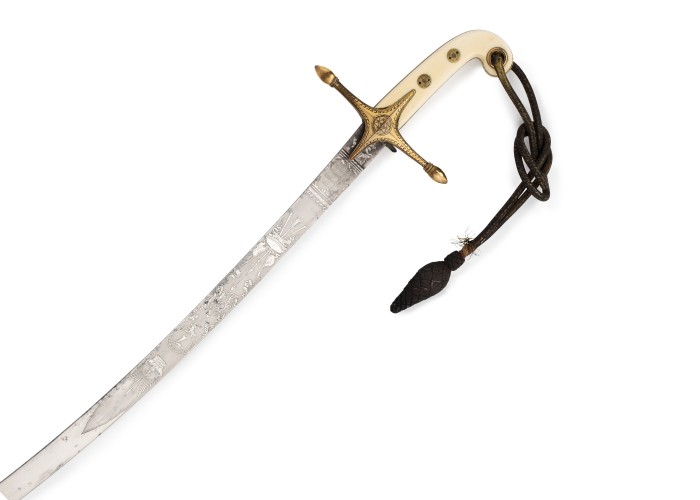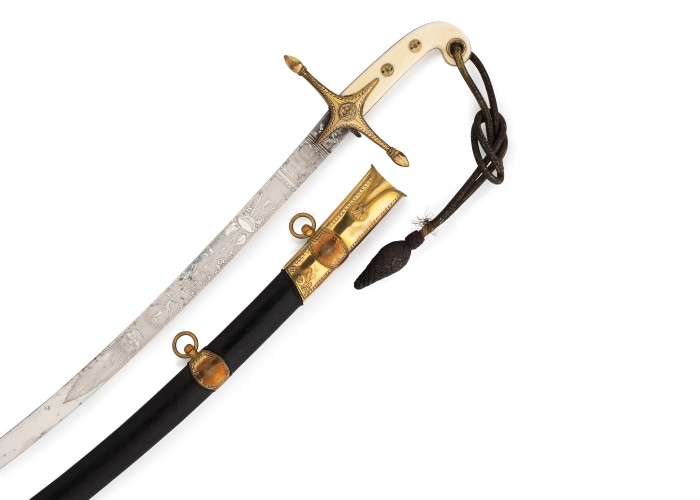Mameluke Sword
This sword is a Mameluke sabre, a style of weapon modelled after the scimitars carried by Egyptian soldiers who fought for Napoleon. During the French invasion of Egypt in 1798, hundreds of Mamelukes were recruited by the French Army. They became Napoleon’s personal bodyguards, and fought at the Battle of Waterloo. These exotic warriors fascinated European society, and many armies, including the British, copied elements of their style and weaponry.
This sword belonged to a British officer, Lieutenant-Colonel Edward Kerrison, who led a British cavalry regiment, the 7th Hussars, at the Battle of Waterloo.
Mamelukes were members of a warrior class in the Muslim Middle East. Originally slaves who served as a personal bodyguard to the monarch, by 1798 they had become a powerful independent force who dominated Egypt and Syria. After being defeated by the French, between 100 – 200 Mamelukes switched sides to join Napoleon’s armies, while others were sold as slaves to the French conquerors.
The Mamelukes in French service were attached to Napoleon’s Imperial Guard in 1803, becoming part of the Emperor’s personal bodyguard. They were organised into a cavalry regiment, each man dressed in fashionable and exotic “Turkish” style clothes, and carrying a curved scimitar. The regiment was present at the Battle of Waterloo, but seems to have seen little action. After Waterloo, the Mamelukes were seen as too closely associated with Napoleon, and their regiment was disbanded, with many of its soldiers sent back to the Middle East. 18 Mamelukes were murdered by an anti-Napoleon mob in Marseilles in the months after Waterloo. However, they had already made their mark on the European imagination.
This sword comes from 1821, six years after the Battle of Waterloo, when a craze for “oriental” styles was sweeping Europe. Fashionable women wore turbans and brightly patterned shawls, and children would be dressed in “Mameluke” outfits. British Army cavalry officers started to carry Mameluke-style scimitars. The Duke of Wellington himself carried a Mameluke sword, captured during his days campaigning in India. To this day, Generals in the British Army carry a Mameluke sword as their ceremonial sidearm.
This sword shows the incredible impact of Napoleon and his soldiers on fashion and the popular imagination.
-
Curatorial info
- Originating Museum: Queen's Own Hussars Regimental Museum
- Production Date: 1821
-
Use this image
You can download and use the high resolution image for use in a non-profit environment such as a school or college, but please take note of the license type and rights holder information below
- Rights Holder: Copyright Queen's Own Hussars Regimental Museum. Photography Relic Imaging Ltd.
- License Type: All Rights Reserved
Find it here
This object is in the collection of Queen’s Own Hussars Regimental Museum











